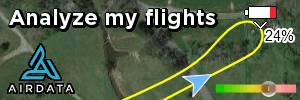Technically, I'd say you are wrong. First, there is no FAR requiring a 500'agl minimum over 'populated' areas. Fixed wing manned aircraft are required to stay 1000'agl min over densely populated areas. Rotor craft don't seem to have any actual minimum. Both are generally restricted to a 500' clearance from people and buildings, but that is not an altitude restriction. The FAA is quite clear, an ultralight vehicle is NOT an aircraft and therefore not subject to FARs specific to aircraft. If ultralight vehicles were subject to the FARs for aircraft, one would need pilot's license to fly one and they would have to have N numbers.
FAR 103.15 states that one may not fly an ultralight vehicle over congested areas or an open air assemble of people. That means 'not over' no matter how high! While the definition of 'congested area' is not very well defined, the restriction is absolute: no matter how high.
When it comes to low level flight, FAR 103.9 (a) says one may not fly in a manner that creates a hazard to persons or property. And that's it.
As far as the OP's example, it's possible that FAR 103.9 (a) could be interpreted to restrict an ultralight vehicle from flying close to people on the beach. If the number of people on the beach constitutes an 'open air assemble of people', than an ultralight may not over fly them at any altitude.
As long as an ultralight vehicle is operated within FAR 103.9 (a) and FAR 103.15, it can be flown as low as the pilot wants. As a practical matter, except for the lack of a 500' clearance requirement, this is actually much more restrictive than for manned aircraft.
Nick
Nick, let's take a few things you stated above, for example your first paragraph. You seem to think there is no requirement to be 500ft AGL. Well you are incorrect, there is a law that states you must be a min. of 500ft above a populated (or better stated Other than congested) area. You are mixing in here populated areas and densely populated areas. We have all been discussing the area where the OP was flying, this was a beach and he let us not that there were some people on it but he did not state this was a "Densely" populated area. Therefore we are assuming this was simply a populated area or in FAA speak "Other than congested" area.
You stated that an aircraft as in GA type, must be a min. of 1,000ft above a densely populated area, that is mostly correct, but again you brought in the word "Densely" and no one was previously speaking about Dense. (Not that it makes any real difference but the FAA use the word congested and non congested). However, since you brought it up, you must understand that the rule is a little more complicated than the simplicity you stated. A pilot must be a min. of 1,000ft above the tallest structure in that "Densely" populated (or congested) area, which means if there is a slight hill of 50ft and they build a church on that and it has a100ft spire then the pilot must be a minimum of 1,150ft above that spire, unless he skirts it by at least 2,000ft, then he can be back down to 1,000ft.
Now when it comes to just a populated area (we can also call this non-congested or "Other than congested" to be precise), then the pilot can fly lower, but they can not fly as low as they want to, it is still required to be at least 500ft above that populated area. Go back and have another read of Part 91, since you keep bringing that up. Now I have stated this before, if the pilot is over open water or barren land as in the open range in Colorado or open farm fields in the middle of nowhere, anywhere, then they can of course be as low as they feel safe to fly, but they must still steer clear of any person or car or structure in that open land by at least 500ft. They can not just buzz above them. Nick, if you feel there is no min. altitude over populated or as FAA puts "Other than congested areas" you are wrong. The rule clearly states (once more we are not speaking about over open water or in the middle of nowhere here) the aircraft must maintain a min. of 500ft AGL and here is the wording for you:
(c)
Over other than congested areas. An altitude of 500 feet above the surface, except over open water or sparsely populated areas. In those cases, the aircraft may not be operated closer than 500 feet to any person, vessel, vehicle, or structure.
Nick, the above means the pilot can be as low as they want but must be at least 500ft away from anything on the ground. Rotor craft must still abide by these rules but they are allowed to deviate from the altitude mins. if their flight plan calls for that. That means they are not allowed to buzz a congested (or densely populated) area at 300ft or 500ft unless there is a valid reason for them to do so. Same over "Other than congested" areas, they can not legally just buzz around at 200ft just for fun, because if they were reported, they would "have sum splainin to do" (that is for all the Lucy fans reading.
Ultralights are a little more free in some areas, as are rotor craft, but the FAA also clearly states that the ultralight too must follow or parallel the same rules that GA aircraft follow, when flying in certain airspace.
Now Nick, in your second paragraph you stated Ultralight man not fly over congested areas, and we know this and I have clearly stated that previously, therefore, there was no need for you to reiterate that, this was not "new" news to us.
Nick, your paragraph four, again this has already been stated so you are just repeating what I have already said, again, no new news here. Now the FAA purposefully do not specify what constitutes a gather of people, therefore it is best to think this as a minimum of one to be on the safe side, just don't buzz anyone and steer clear at least 500ft around them.
There is no point in beating this horse anymore, the laws are in place and must be followed. And of course there are always people who do not do this, whether in a car, flying a drone, an ultralight or a GA aircraft and sometimes even a commercial aircraft, but we can't control that.










